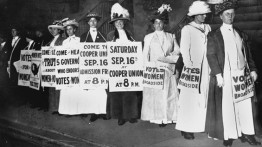I Love NY
POSTED ON: September 29, 2020
It is not unusual for a new course to prove itself highly popular right out of the gate, but “New York City: A 5,000-Year History,” seems to have beaten some odds. An interdisciplinary course being taught by David Gersten AR’91, distinguished professor adjunct, it was offered as an elective to all Cooper Union students after fall registration had closed, meaning they had to incorporate it into already-fixed schedules. Additionally, it was developed primarily to support incoming international students’ transition to New York City. (It is a newly required course for this cohort.) It only counts for one credit and does not completely fulfill any degree requirements; but despite that, registration was surprisingly robust, nearly double the expected amount, and includes far more domestic students -- from all three schools -- than international ones.
Mark Campbell, vice president for enrollment, was not especially surprised that “New York City: A 5,000-Year History” proved popular. “Students are clamoring for courses that explore more than just their single area,” he says. David Gersten, who has taught at The Cooper Union for nearly 30 years, puts it this way: “With this class, open to all students, from every year, in all three schools, our hope is to collectively address the large, seemingly intractable questions of our time and foster the emergence of new models of interdisciplinary collaboration, action, and practice that embody our best hopes and aspirations.”
The course includes, “examples from over 5,000 years of art, architecture, engineering, science, technology, biology, finance, industry, politics, poetry, film, music, theater, religion, and literature,” according to the course description, and has hosted guest speakers. The history of The Cooper Union also plays a role in the course given its reflection of the city as a locus of major transformative acts, as the embodiment of the intersection of art and science, and where the co-mingling of national and international cultures and issues are woven into its very fabric.
“So far I have really enjoyed this class,” Pavlos Koronakis, a freshman from Athens who lives in the dorm and studies chemical engineering, says. “I have expanded my knowledge in debt, the concept of money, and capital markets. I think Professor Gersten is doing a great job explaining each concept in his lectures, and he has also brought very interesting guests to join us.”
Celia Liberace, a junior in the School of Art, elected to take the course because, “I took David’s ‘Global Issues’ course last semester and really enjoyed the ways in which he articulated abstract, ostensibly disembodied concepts concerning the nature of humankind. I was hoping this class on the history of New York could help me expand upon these ideas further. David is exceptional in the way he introduces broad, universal issues - human ontology, the imagination, materialism, ecology, sustainability - and roots them in our day-to-day experiences, so as to make them appear more tangible. In this class particularly, we are to actively link these ideas, or rather, extract them from, the architecture, sidewalks, roads, parks, and complex infrastructures that make up all that is New York City.”
“I’m very excited to be teaching this class,” Gersten says. “The overall idea for the course is to look at New York City as an intersection of many nationalities, cultures, and disciplines of art, architecture, and engineering. If there is one thing that we are learning from our multiple current crises, it’s that our greatest potentials for action are found within our collective capacity to work together, to collaborate towards comprehending the multiple transformations we face.”







